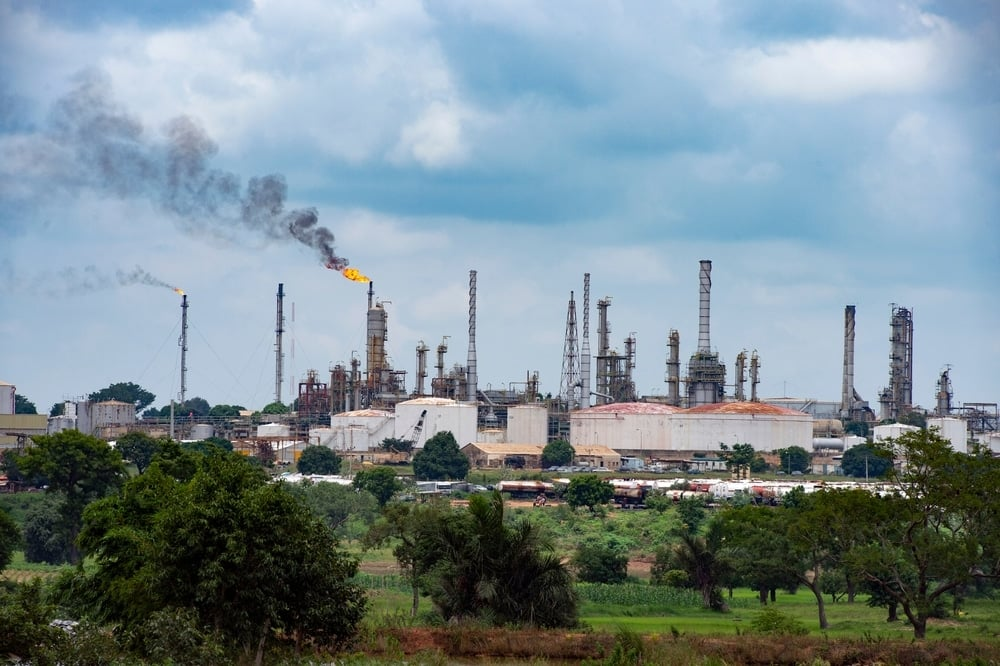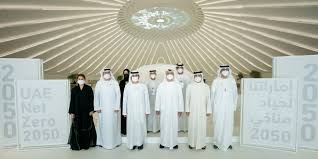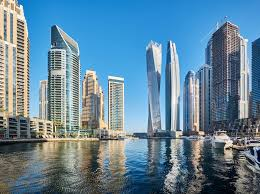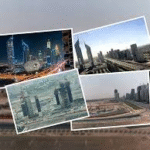Now Reading: “How UAE Plans to Cut Its Rising Carbon Footprint Fast 2025”
-
01
“How UAE Plans to Cut Its Rising Carbon Footprint Fast 2025”
“How UAE Plans to Cut Its Rising Carbon Footprint Fast 2025”

Table of Contents
The United Arab Emirates (UAE) is quickly becoming a leader in environmental responsibility as it works to reduce its carbon footprint. Once known for its fast-growing cities, luxury lifestyles, and oil-based economy, the country is now determined to transform into a global model of sustainability and climate action.
In recent years, the UAE has set strong environmental goals to limit carbon emissions, promote clean energy, and move towards a greener future. This journey is not only important for the planet but also for the country’s long-term economic stability and global reputation.
What Is the Carbon Footprint Problem?

A carbon footprint is the total amount of greenhouse gases, especially carbon dioxide (CO₂), released into the atmosphere by human activities like energy use, transportation, and industry. When countries like the UAE grow rapidly in terms of development and population, their carbon footprint can increase quickly unless green efforts are put in place.
According to recent reports, the UAE is among the top countries in the world in terms of carbon emissions per person. The main reasons are its dependence on fossil fuels for energy, a large number of cars on the road, and heavy industrial operations such as oil production, aluminum smelting, and construction.
But things are changing fast. The UAE has recognized this issue and is taking strong steps to reduce its impact on the environment.
UAE Net Zero 2050 Strategic Initiative

In 2021, the UAE became the first Gulf country to announce its plan to achieve Net Zero carbon emissions by the year 2050. This national initiative means the country plans to balance the amount of carbon dioxide it emits with the amount it removes from the atmosphere.
To reach this ambitious goal, the UAE is investing more than AED 600 billion ($163 billion) in clean and renewable energy projects over the next 30 years. Some of these projects include:
- The Mohammed bin Rashid Al Maktoum Solar Park: One of the largest solar energy farms in the world, located in Dubai.
- The Barakah Nuclear Power Plant: The first peaceful nuclear energy plant in the Arab world, expected to provide up to 25% of the UAE’s electricity needs.
- Hydrogen Projects: The UAE is exploring clean hydrogen fuel as an alternative to fossil fuels for industries and transportation.
These initiatives will reduce the country’s reliance on oil and gas, the very resources that made it rich but also contributed to its carbon footprint.
How the UAE is Changing Industries and Lifestyles

Reducing the carbon footprint is not just the government’s responsibility; industries and people across the UAE are also expected to take action.
1. Green Construction
The building and real estate sectors are adopting energy-efficient designs, smart cooling systems, and eco-friendly materials to reduce energy use. Dubai and Abu Dhabi have already made it mandatory for new buildings to meet green standards.
2. Sustainable Transportation
Electric vehicles (EVs) are becoming more common on UAE roads. Government support, like tax reductions for EV owners and charging stations, encourages people to shift from petrol-powered cars. There is also investment in public transport systems such as electric buses and driverless trains to cut emissions.
3. Waste Reduction
The UAE has committed to reducing landfill waste and increasing recycling rates. In 2023, Dubai banned single-use plastic bags, and similar measures are spreading across other Emirates to reduce plastic pollution.
4. Water Conservation
Desalination plants in the UAE are energy-intensive. To reduce their carbon footprint, the country is looking into solar-powered desalination technologies and better water recycling methods.
5. Corporate Responsibility
Major companies like Emirates Airlines and ADNOC (Abu Dhabi National Oil Company) are part of the UAE’s green mission. Emirates is researching sustainable aviation fuel, and ADNOC is investing in carbon capture and storage (CCS) technologies to trap carbon emissions before they reach the atmosphere.
Challenges Ahead
While the UAE’s climate plan is impressive, it faces some big challenges:
- High Energy Demand: As the population and economy continue to grow, energy needs will rise, putting pressure on renewable sources.
- Dependence on Oil Exports: The UAE’s economy has long depended on oil sales. Reducing carbon emissions without hurting this income source requires a careful balance.
- Changing Public Habits: Getting people to reduce car use, recycle more, and consume less energy will take public education and time.
Still, the government is hopeful. With Expo 2020 in Dubai promoting global climate awareness and COP28 being hosted by the UAE in 2023, the country has already shown it can play a leadership role in climate discussions.
Why Reducing the UAE’s Carbon Footprint Matters to the World
The world is fighting to limit global warming to 1.5°C to avoid the worst effects of climate change—such as extreme weather, sea-level rise, and food shortages. The UAE, as an influential oil-producing nation, can set an example for other countries by showing that green energy and economic growth can go hand in hand.
If the UAE successfully reaches Net Zero by 2050, it could inspire other Gulf states and oil-reliant economies to follow the same path.
Conclusion: A Green Future for the UAE
The UAE’s carbon footprint is a big challenge, but the country is meeting it with bold, creative, and forward-thinking solutions. From solar farms in the desert to electric cars in cities, the change is happening everywhere.
As 2050 approaches, the world will watch closely to see if the UAE can fulfill its promise of a Net Zero future—and lead the Middle East and the world toward a cleaner, safer planet.
Read More:- Shobha Realty Launches Its Most Luxurious Project Yet—Full Details Inside 2025






















